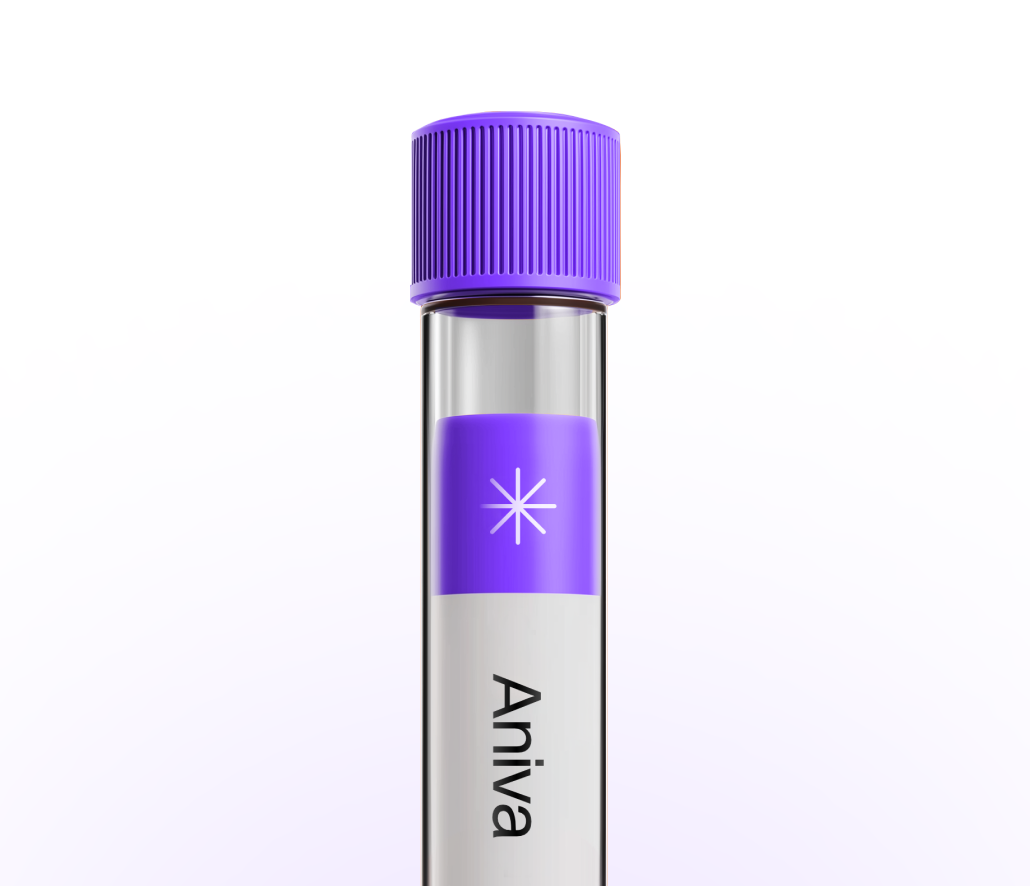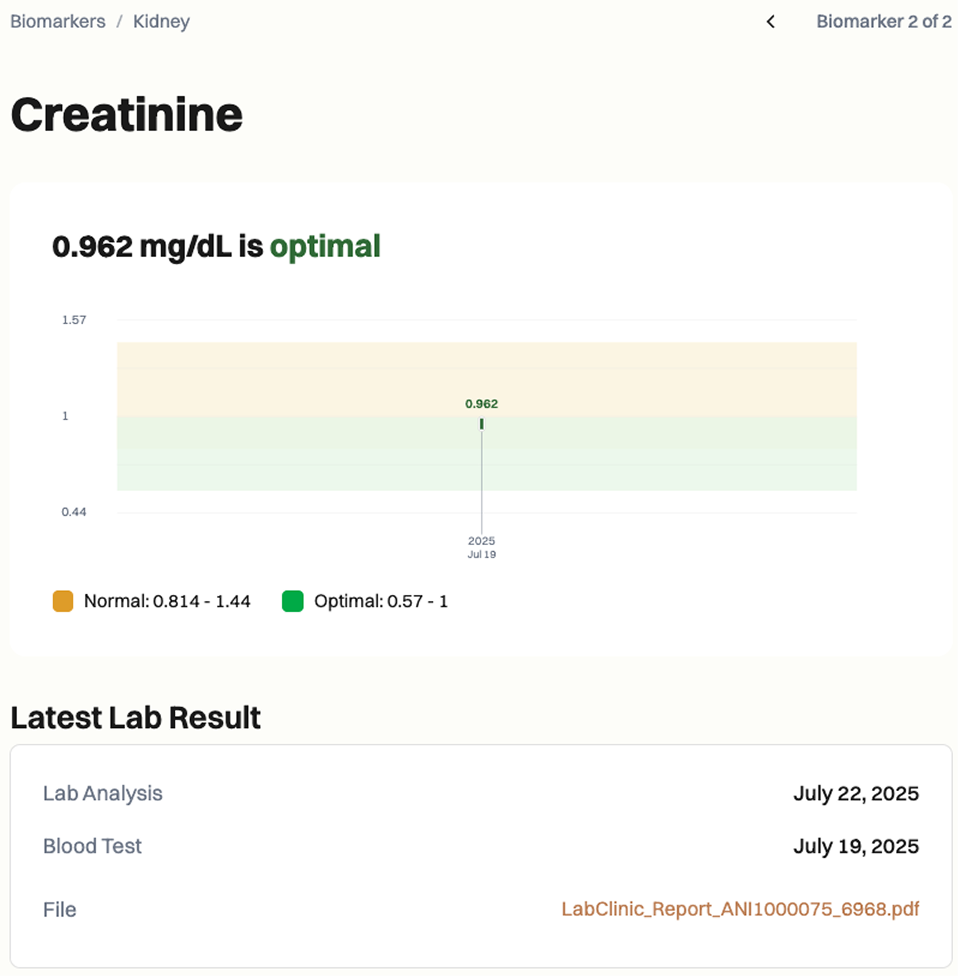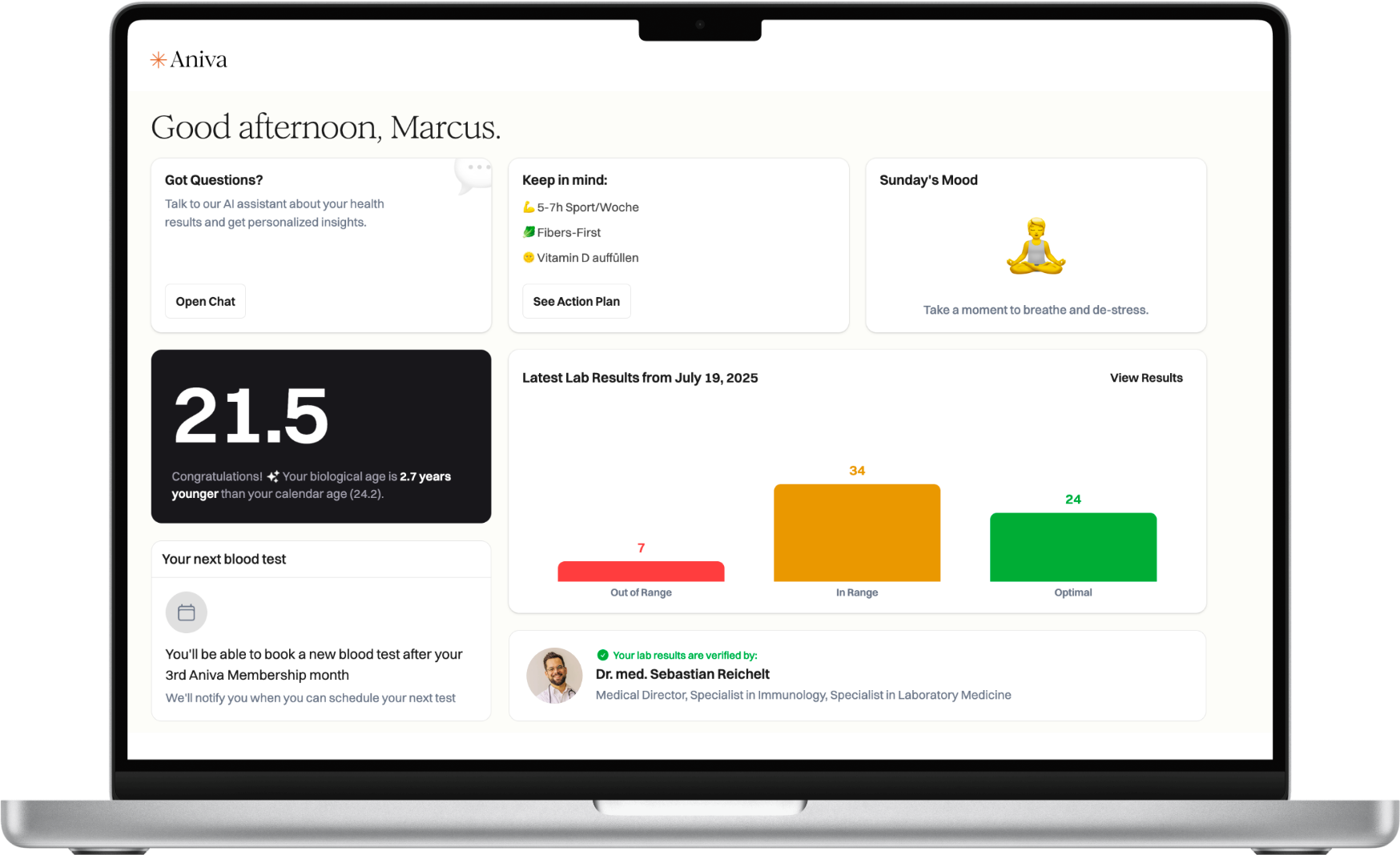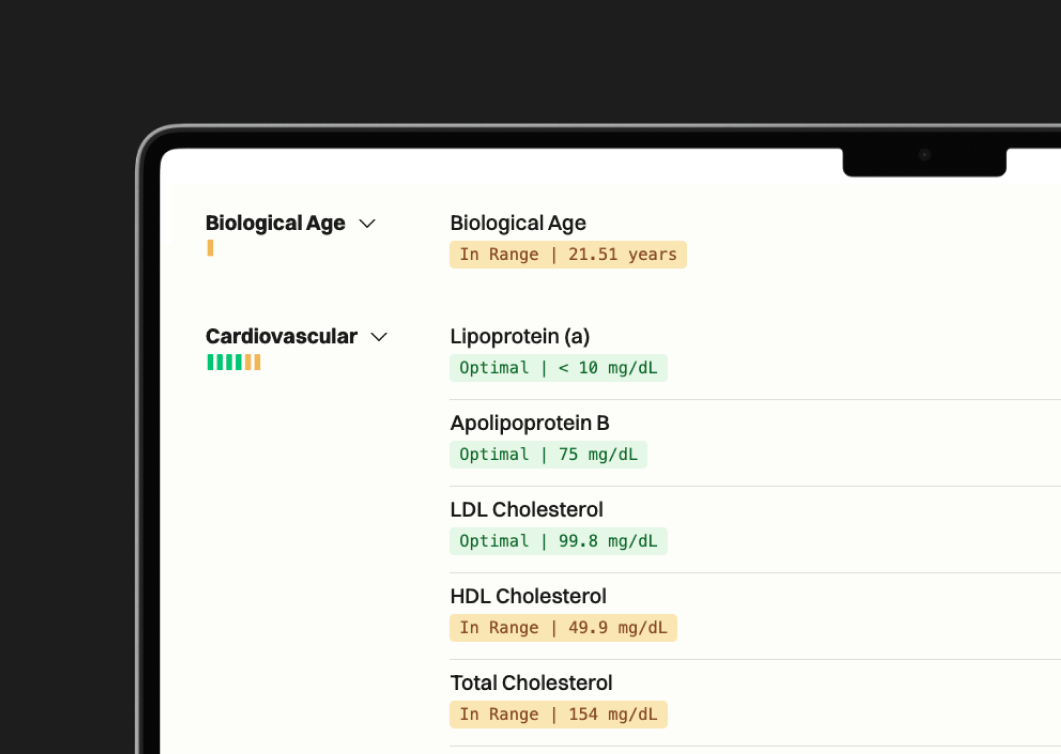An estimate of active (free) testosterone using total testosterone and SHBG when results seem unclear.
Securely stored in EU
Cancel anytime
Test 100+ biomarkers

Less than 5 minutes waiting time. One
simple test at one of our 20+ locations.
Get your lab reports within one week.
Accessible on our app and per PDF.
All your health records stored
in a single, convenient place.

Clinicians use the Free Testosterone Index when total testosterone does not match symptoms or when SHBG may be altered. It can help assess possible androgen excess in women and low testosterone states in men. Results can guide next steps, like measuring free testosterone with a validated calculation or looking for causes of SHBG changes. You can test this marker with Aniva across Germany and Finland.
Clinicians use the Free Testosterone Index when total testosterone does not match symptoms or when SHBG may be altered. It can help assess possible androgen excess in women and low testosterone states in men. Results can guide next steps, like measuring free testosterone with a validated calculation or looking for causes of SHBG changes. You can test this marker with Aniva across Germany and Finland.
High: Suggests more free testosterone. In women, it may align with acne, extra hair, or irregular periods. In men, it can reflect higher androgens or low SHBG (for example, with obesity or insulin resistance).
Low: Suggests less free testosterone. In men, it may align with low libido, tiredness, or low mood. In women, a low value is often normal. Review medicines and health factors that change SHBG.
Because FTI is indirect, confirm unexpected results with a validated calculated free testosterone or a direct free testosterone method.



Common factors that can skew results include time of day, recent illness, weight changes, and medications. Oral estrogens or combined pills (raise SHBG), anabolic steroids or androgens, antiandrogens, thyroid or liver problems, and pregnancy can shift SHBG and change FTI. High-dose biotin may interfere with some immunoassays for testosterone or SHBG.
Special situations (when to confirm or adjust): pregnancy, estrogen therapy, thyroid or liver disease, or very abnormal SHBG—consider a validated calculated or directly measured free testosterone.
What does an FTI result mean in plain terms? It estimates how much testosterone is available to your body’s tissues. Higher suggests more active hormone; lower suggests less.
Do I need to fast? No. Fasting is not required for FTI. Morning collection is preferred, especially for men.
What can affect my result? Time of day, birth control or estrogen therapy, anabolic or antiandrogen medicines, thyroid or liver issues, weight changes, and high-dose biotin can all shift results.
How often should I test? Timing depends on symptoms and any treatment changes. Many recheck after several weeks to months to confirm trends.
How long do results take? Most labs report FTI within 1–3 working days.
What should I discuss with my clinician? Share your symptoms, medicines, supplements, and life changes. Ask whether a validated calculated or direct free testosterone test would add clarity.



One annual blood test (100+ biomarkers)
Clinician-reviewed insights
Personalized action plan
Access to our AI Concierge
Access to curated products


63%
44%
70%